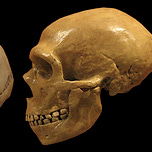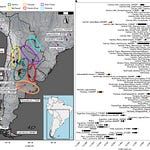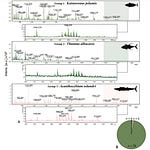A Disappearance That Still Defies Simplicity
For more than a century, the fate of the Neanderthals has hung between tragedy and inevitability. Once the dominant hominins of Ice Age Eurasia, Homo neanderthalensis vanished roughly 40,000 years ago, leaving behind bones, tools, and a genetic whisper inside the DNA of living humans.
Scientists have argued over whether climate swings, competition, or disease spelled their doom. But what if extinction was never the right word? A recent study in Scientific Reports1 by Andrea Amadei, Giulia Lin, and Simone Fattorini proposes something subtler: that Neanderthals simply blended away.

Their model suggests that recurrent, small-scale migrations of Homo sapiens into Neanderthal territories could, through steady interbreeding, have diluted the Neanderthal genome to near invisibility within 10,000 to 30,000 years—no wars, no plagues, no superiority needed.
“The genetic disappearance of Neanderthals may have been a quiet mathematical inevitability rather than a dramatic evolutionary event,” explains Dr. Elena Rossi, a paleoanthropologist at the University of Cambridge. “When populations differ in size by orders of magnitude, the smaller one vanishes almost naturally in genetic terms.”
Listen to this episode with a 7-day free trial
Subscribe to Anthropology.net to listen to this post and get 7 days of free access to the full post archives.








